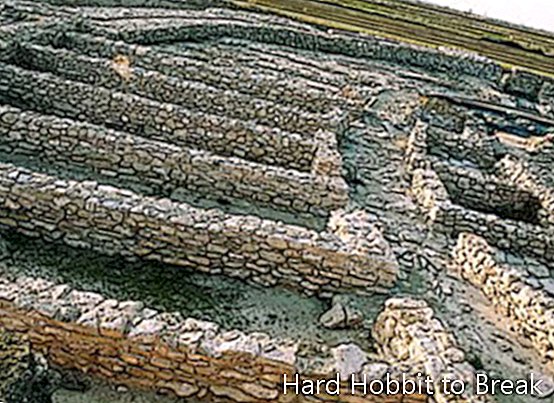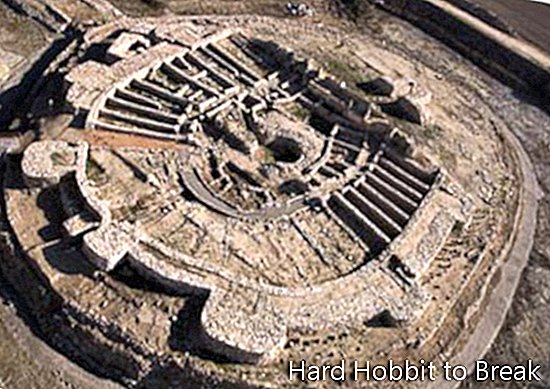
The ilergetes they were one of the Iberian tribes that occupied the territory called Ilergecia, whose capital was Iltirta, the current Lleida. Some 2,700 years ago, these tribes lived in towns that used to be on hills and surrounded by walls, for defensive reasons. These walls were characterized by having the defense towers in a circular or square shape, and narrow exterior doors, for better defense of the town.
Lleida is an example of an originally Iberian city, since it had a small walled town on the Subirana Rock. Another example is the ruins of Gebut, in Soses (Segrià), Molí de l’Espígol, in Tornabous (Urgell), els Vilars, in Arbeca (Les Garrigues) and many others scattered throughout the region.

Els Vilars (Arbeca), constitutes one of the towns unique in all Europe. Apparently a society enigmatic erected an impregnable fortress in this town located 4 kilometers from Arbeca. At that time, weapons were somewhat rudimentary, so their immense Wall it was the best guarantee for an effective defense. Five meters wide, twelve defense towers and a moat four meters deep by thirteen wide, archaeologists wonder why such a wall. Taking into account that we are in full iron ageThis type of wall, due to its magnitude, would have supported a medieval combat. The invention of the catapult was still far away.
From the traces found, it is also known that it was a small and rich society. In addition to cultivating the land, raising horses was one of the activities of the ilergetes in Els Vilars. However, in 350 BC, the town was abandoned for unknown reasons. There are no signs of battle and the perimeter of the fortress, as well as the delimitation of the houses, remains intact.

Molí de l’Espígol, is one of the most important deposits important of Catalonia since it constitutes one of the most evolved urbanistic examples among the ilergetes. The city is divided into two well-differentiated spaces: on the one hand, there is the urban area, with visible remains that can be visited, and on the other, the suburban area, which extends beyond the walls. In the southwest part you can still see the existence of an old pond, possibly destined for water supply.
Its moment of splendor is located between the centuries IV and III B.C.., a time when the town experienced significant growth, becoming a key point in the capitalization of the territory, where a certain political power resided. Later, around the year 200 and on the occasion of the Second Punic War, the deterioration of the city begins.
Gebut (Soses), also quoted in some Greco-Latin writings for the importance of their princes Indibil Y Mandoni. At 500 meters from the urban core, are the vestiges of this, no less, important ilergete town that appears practically complete, with a central road, cross streets and the floor plan of the buildings.
There are numerous findings from different periods of history that have appeared in the area. From remains of fossilized mammalian bones, tortoise shells of the was tertiary until vestiges of the time roman and a castle Saracen that corroborates the Islamic origin of the population of Sosses. The crocodile fossil of more than 35 million years, in an excellent state of conservation, is exhibited in the population library.
Places to see in ( Lleida - Spain ) (April 2024)
- history, Lleida
- 1,230
















